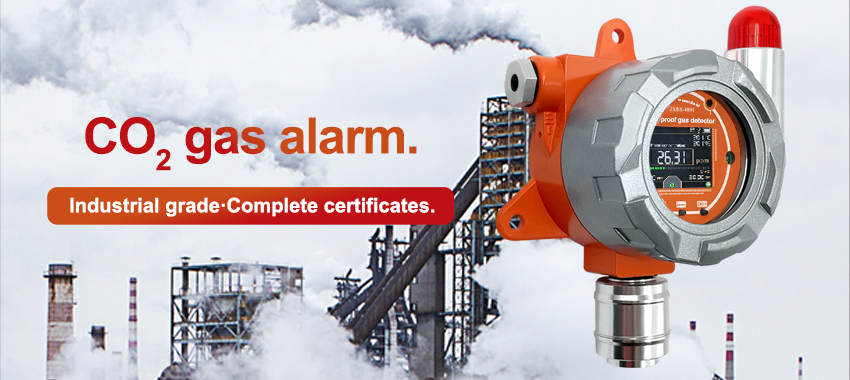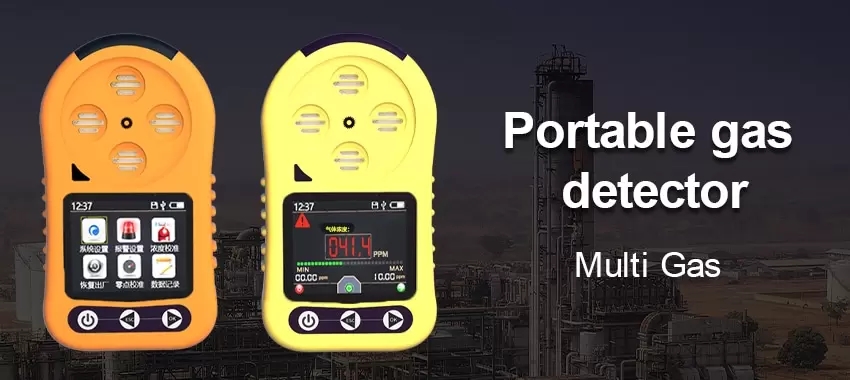CO2Meter is widely recognized as a leader in the field of gas detection, prompting regular questions from customers and stakeholders around changing and evolving trends in terms of gas sensing technologies over the years.
Continued rapid innovation across the industry has required the company’s team to monitor and adapt to recent trends, particularly new developments in wireless connectivity, multiple gas sensing, accuracy and sensor lifespan.
Customers seeking the latest in gas sensing technologies have historically focused on size and ease of integration, but more recently, customers are considering the need to integrate these sensors’ unique and often bespoke applications, including indoor air quality (IAQ), healthcare, safety, agriculture and academic research.
Customers have come to expect the latest gas sensing technologies with the most current and advanced features.
Improvements in technology have afforded users complete peace of mind and the confidence that their sensor is able to accurately provide measurements and analysis across multiple gases.
Users can now be sure that this technology is more user-friendly than before, with many advanced sensors offering simple touch screen panel interfaces or smartphone apps.
These new technologies and advanced present-day gas detection solutions have revolutionized many of the approaches to monitoring gas concentrations.
These sensors and monitoring solutions have also become much more affordable, with advances over the last few decades seeing sensors downsized to the size of a coin, costs reduced to under $100 and optimized design and manufacturing processes enabling the fabrication of compact, sleek modules that can fit in the palm of the hand.
Newer sensors also boast the ability to perform measurements rapidly while offering an array of advanced capabilities and features.
Choosing the Most Ideal Gas Detection Device
It can be challenging to understand what distinguishes the best gas sensor option from the worst when looking for a solution to a specific application.Whether an application requires detection of CO2, O2, CO or another gas concentration, it is not always easy to find the most effective, accurate and reputable technology.
This article looks at some of the technological advancements and features that make devices stand out in terms of accuracy, multiple measurement capabilities, lifespan and wireless connectivity options.The most popular gas sensor technologies are categorized below, sorted by important capability and commonly encountered requirements.

Sensor Accuracy
Accuracy is one the most essential factors in a gas detector. Customers tend to view accuracy as a central performance specification, including the impact of conformity and repeatability.
In fundamental terms, accuracy describes how closely the indicated measured value represents the actual value being monitored. This factor must take into account any potential source of error that could be relevant to an application.
Gas sensor accuracy is typically noted in two formats: +/- ppm and a percentage (%) of the measured value. A +/- ppm reading indicates the range for an accurate reading, while the percentage of the measured value is typically regarded as the ‘worst-case scenario’ for that sensor’s accuracy.
CO2Meter’s optimal solution for accuracy and reliability is the CO2 Sensor. The SE-0117 is one of the most rapid, commercially available CO2 sensors, boasting powerful NDIR technologies which can measure up to 10000 ppm CO2 at a rate of 2x readings per second.
This sensor’s central competitive advantage stems from its rapid response rate, making it an ideal and affordable solution for users looking to integrate CO2 sensing into applications where rapid data sampling is essential, for example, modified atmosphere packaging (MAP) or occupancy detection.
The sensor module has been developed using best-in-class NDIR technology and offers a working life of over 15 years, making it extremely popular among CO2Meter customers.
This sensor module can also be connected to a sensor development kit, ideal for those who are looking to perform further analysis and measure or graph gas concentration levels over time for data logging functions.
Connectivity
Connectivity represents another vital consideration in sensing technology. More users are placing increased emphasis on their ability to effectively read and collect data, either via traditional analog or digital outputs or via cloud connectivity or wireless monitoring.
The ability to remotely monitor gas concentrations in real-time allows customers to acquire essential measurements and updates from a compatible smartphone or PC.
Users considering cloud-based monitoring and data logging capabilities typically opt to employ the Aranet4 PRO Indoor Air Quality Monitor - a sleek, modern, wireless-enabled device able to accurately detect CO2, relative humidity, temperature and barometric pressure via the Aranet4 iOS or Android app.
This device is frequently used to monitor indoor air quality in residential homes, universities, offices, commercial spaces or any space where it is necessary to manage CO2 levels for occupant comfort.

Multiple Gas Detection
Some applications require the use of gas sensors to monitor a wide range of multiple gas concentrations. Advances and new application spaces across a range of industries have created the need to monitor several gases simultaneously in a given environment.
CO2Meter’s Multi Gas Sampling Data Logger offers the flexibility and scalability to monitor up to 64 sensor configurations across CO2, CO, O2 and CH4 gases. This instrument represents the most advanced portable detector available and a popular choice for many of the company’s customers.
The Future of Gas Detection Technology
These considerations of accuracy, wireless connectivity, multiple measurements, lifespan and integration capabilities will continue to be central to the selection of sensing solutions. Each of these facets of the technology will continue to evolve to meet industry demands and customers’ everchanging application requirements.
Future gas sensor technologies are anticipated to provide the end-user with entirely new user experiences and use cases, continuing to exceed their expectations and shape a range of industries.
 : +86 155 8830 2704
: +86 155 8830 2704 : jxdziot@gmail.com
: jxdziot@gmail.com
